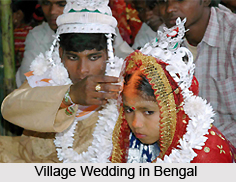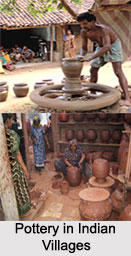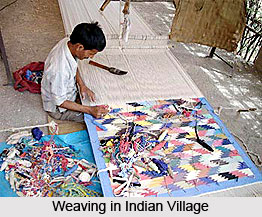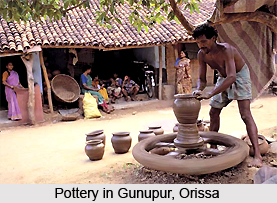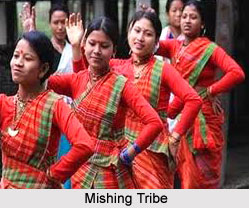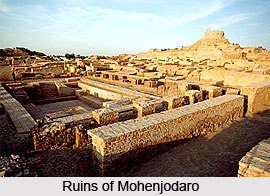 India is a vast country with a majority of its total population living in the villages. The Indian society is predominantly divided into two divisions like the rural society and the urban society. Villages have always been an integral part of society in India. No specific timeframe can be mentioned about the conception of villages in India. However, the concept of village was not present there in the ancient period. The Indus Valley civilisation is so far known to be the ancient civilisation in India and it mainly comprised two cities of Harappa and Mohenjodaro. However, the concept of village seems to be absent during this era.
India is a vast country with a majority of its total population living in the villages. The Indian society is predominantly divided into two divisions like the rural society and the urban society. Villages have always been an integral part of society in India. No specific timeframe can be mentioned about the conception of villages in India. However, the concept of village was not present there in the ancient period. The Indus Valley civilisation is so far known to be the ancient civilisation in India and it mainly comprised two cities of Harappa and Mohenjodaro. However, the concept of village seems to be absent during this era.
History of Indian Villages
The history of Indian villages, in fact, goes back to the Vedic era when the kingdoms comprised a major city and several villages. The villages were a cluster of houses and the surrounding land was cultivated by the villagers. The concept of villages in India flourished during the late Vedic era or during the reign of the Mauryas. The Maurya Dynasty was founded by Chandragupta Maurya during 323 BC and the villages were a predominant part of the Indian social system at that time. The villages were administered in a structured way, through a Gram Sabha during the Maurya Dynasty. The religious and cultural scenario of the villages was primarily dominated by the Hindus, especially the Brahmans. The caste system of Hinduism was strictly maintained during that period.
Structure of the Indian Village System
However, the social structure of the Indian villages changed drastically during the reign of Muslim emperors like the Mughals or Afghans. This period in the history of Indian villages saw the villagers being influenced by Islam and the equality for religious practice, among all parts of the society was also maintained. During the British period, the Indian villagers got influenced by the Christian religious culture and a rich diversity of several religions was seen during that period. The social structure in the Indian villages also changed accordingly with the change of religious and cultural scenarios.
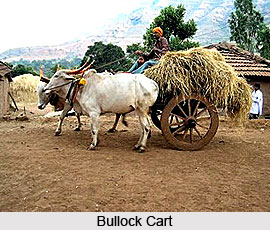 Political Scenario of the Indian Village System
Political Scenario of the Indian Village System
The political scenario in the Indian villages has witnessed interesting changes from the ancient period to medieval period to the contemporary period. In the ancient period, the Indian villagers were not inclined to politics and they blindly followed the rules of their kings. This tradition of political unawareness among the Indian villagers continued during the medieval period also. However, the Indian villagers started to be politically aware during the British period. In the contemporary period, the Indian villagers are very much inclined to political activities and they also take active part in all kinds of political decision making process in independent India.
The political scenario of the Indian villages has probably seen the most significant changes, so far. While the Indian villagers were politically unaware for most parts of the ancient and medieval period, they have now become very much politically active. They are actively participating in the democratic political system of India by casting their votes during general elections. They also actively take part in the local governance system in India. The history of Indian villages has also seen drastic changes in transport system. The Indian villagers can now avail almost all the modern means of transport.
Transport System of the Indian Village System
Walking was the only way of transport in ancient Indian villages. There was no alternative transport system for the villagers, until the vehicles like Bullock Carts, or Palkis, or Horse Carts, Boats, Ships, etc. came into existence. These continued to be the principal means of transportation for a long period, till the end of the medieval period. However, the British rulers brought about a huge change in the transport system of Indian villages by introducing the busses, trains and other automobiles.
Education System of the Indian Village System
The educational scenario has also seen significant changes in the history of Indian villages. In the ancient period, the Indian villagers used to be taught the Vedic and other Hindu scriptures by the Brahmans. These scriptures were the only means of education in the ancient period. The women also used to get education during that period. However, the scenario changed during the medieval period, when the Muslim rulers put on restrictions on women education. The Indian villagers also started to learn about the Buddhist, Jains or Muslim scriptures during that period. The British era brought about a sea of change in the entire educational system of Indian villages. They introduced English language to the Indian people and the missionaries started to propagate Christianity, through the numerous schools established by the British rulers. The British rulers also introduced different streams of education like medical education, engineering education, technological education, etc. This period witnessed a diverse educational scenario in the Indian villages.
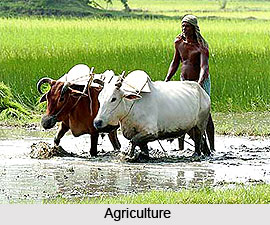 Agriculture during the Indian Village System
Agriculture during the Indian Village System
The history of Indian villages presents an interesting occupation scenario, which has changed with time. Agriculture and farming were the prominent occupations of the Indian villagers during the ancient period and the other occupations included doing clerical jobs in king`s courts or working as soldiers for the emperors. The Indian villagers remained dependent on agriculture for several centuries till the British period. However, the scenario changed during the British rule with the introduction of several industries. The villagers started to move to the urban areas, leaving their traditional occupation of agriculture. They joined different industrial organisations as workers or labourers and found alternate occupation. However, agriculture is still the principal occupation in most villages in India.
The scope of getting proper education has increased in the modern times and the literacy rate in the Indian villages has also increased remarkably. The women in Indian villages are also getting enough scope to get educated in the contemporary period. The scope for getting into different occupations has increased for the Indian villagers in the contemporary period as well. Many villagers have changed their occupation from agriculture to industry and have moved to the rural areas for getting into alternate occupation.
Apart from all these factors, the general condition of the Indian villages has improved a lot in the contemporary period. The electricity has already reached in most of the Indian villages and the villagers are enjoying the other modern technological advancements, as well. As a whole, it can be said that most of the changes that occurred in the history of Indian villages have yielded positive results for the villagers. They have also aided India to become more and more civilised and developed.
